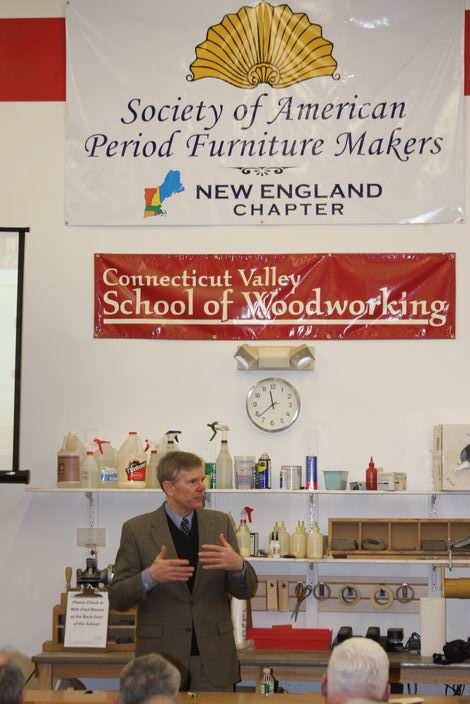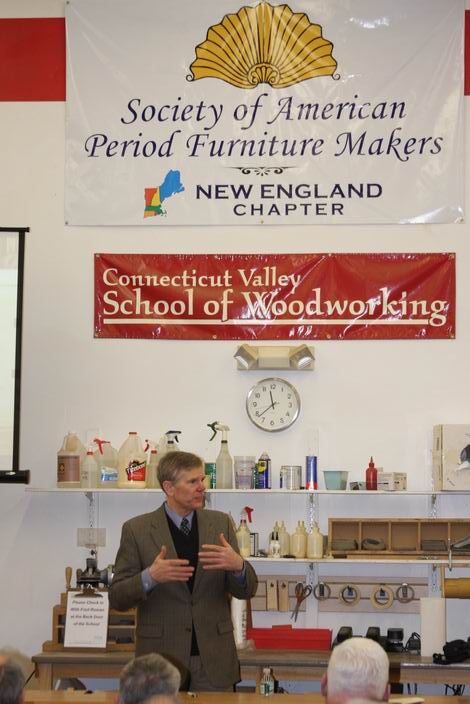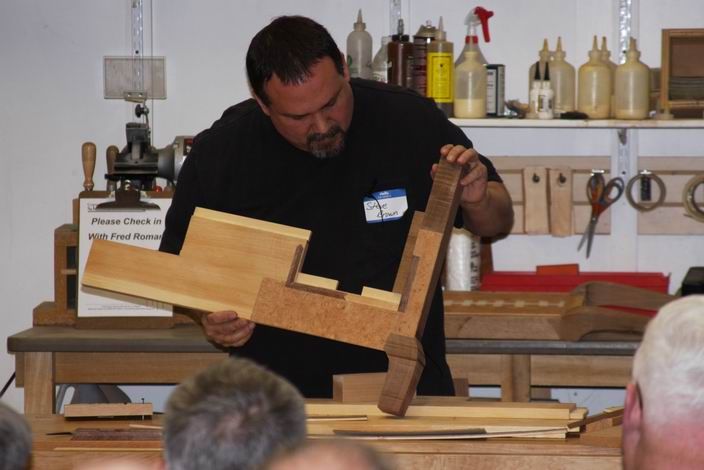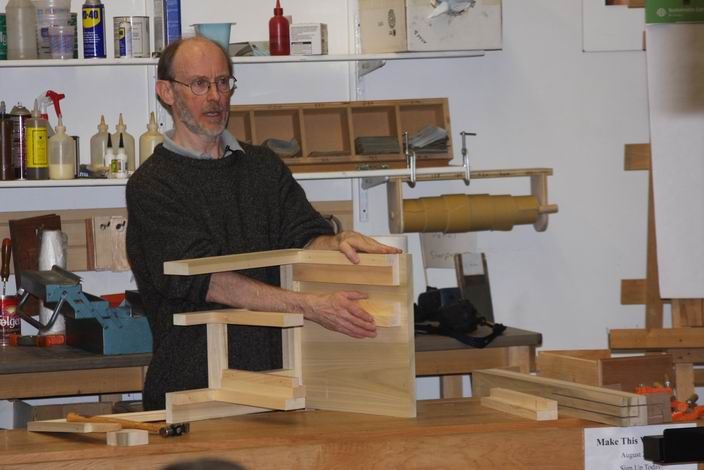
Brock Jobe from the Winterthur Museum.
The intense appeal of period furniture was on display last Saturday as around 100 people attended a meeting organized by the New England chaper of the Society of American Period Furniture Makers (www.sapfm.org). They gathered at the Connecticut Valley School of Woodworking in Manchester, CT (www.schoolofwoodworking.com) for a day-long series of lectures focusing on both the academic and the practical side of 18th century New England furniture.
Brock Jobe, Professor of American Decorative Arts at the Winterthur Museum (www.winterthur.org) gave a talk on Boston furniture focusing on five types of piece: The turret-top tea table, the serpentine bombe chest, the Boston Queen Anne chair, the “elastic” chairs of Samuel Gragg, and the tambour-door ladies desks built by the Seymours. He talked about their origins, the subtle variations from piece to piece, and how they were made. I didn’t know that the term bombe wasn’t used in the late 18th/early 19th century and instead the pieces were referred to as swell chests.
Steve Brown, a teacher at North Bennett Street School’s Cabinet & Furniture Making program (www.nbss.org) whose chair is featured on the back cover of issue 218 of Fine Woodworking (https://www.finewoodworking.com/item/35210/steve-brown-takes-the-measure-of-a-chair) talked about a Queen Anne dressing table discovered not long ago on Martha’s Vineyard. A curious piece with unconventional construction, it still had its original finish which is very rare.
Lastly, well known period furniture maker, Will Neptune, showed how he builds reproductions of tea tables made by Eliphalet Chapin, the late 18th century Connecticut furniture maker. Neptune maximizes efficiency by milling all pieces of the same thickness at the same time, cuts mortises using the same set up and so on. All good tips whether you’re a pro whose time is money or an amateur who just wants to work more efficiently and avoid mistakes.
























Log in or create an account to post a comment.
Sign up Log in